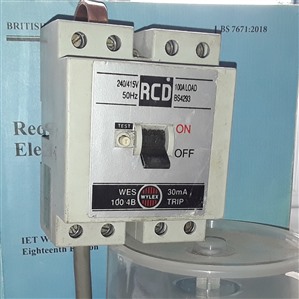Farmboy:
You want incidents to pass on to the people who can make a difference. I'm just wondering what they would change it to, and why would they want to?
F
I think all is needed is a clarification that we the designers and the installers of the kit remain free to exercise, but responsible for, our judgement in terms of selecting the best components for the pick and mix make up of a consumer unit with MCBs. We know if there really are 4 rings at 32A and they are each likely to be fully loaded, or if we have divided up modest house into small lightly loaded circuits for reasons of isolation or other convenience, like the wiring in a conservatory being on its own circuit.
We also know that the OSG diversity method is tosh - it often results in a theoretical supply requirement approaching 200A for a 1 bed flat with a neat CU, when probably a 40A fuse would be just fine.


We're about to take you to the IET registration website. Don't worry though, you'll be sent straight back to the community after completing the registration.
Continue to the IET registration site